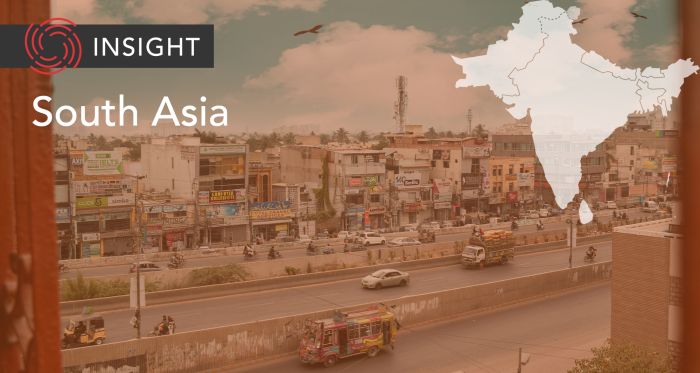The Takeaway
Pakistan's mass deportation of undocumented refugees and migrants, primarily Afghan nationals, has triggered a potential security and humanitarian crisis in the region. The move could heighten security challenges due to threats of retaliation from the Tehreek-e-Taliban Pakistan (TTP), also known as the Pakistani Taliban. The deportations also jeopardize Canadian efforts to resettle Afghan nationals with ties to Canada and have prompted human rights groups to urge for the protection of vulnerable Afghan refugees. The UN has warned of an impending “human rights catastrophe.”
In Brief
- On October 3, Pakistan’s interior ministry announced that all foreign residents lacking legal status would have to depart the country voluntarily by November 1. The caretaker Islamabad government claims the decision is not specific to any nationality. Yet a significant majority of the 1.7 million individuals ‘illegally’ residing in Pakistan are Afghan nationals.
- While the UN reports that 1.5 million undocumented Afghans live in Pakistan, the move could also affect another 1.3 million Afghans officially registered as refugees. An additional 840,000 Afghans possess the legal status necessary to remain in Pakistan.
- Leading up to the deadline, Pakistan initiated the apprehension of undocumented individuals, which included demolishing homes to enforce departures. After the deadline for voluntary departure passed, the mass deportation drive began.
- The government had already established deportation facilities to apprehend and deport ‘illegal’ migrants. Islamabad also mandated a US$830 “exit fee” for Afghans awaiting resettlement in Western countries, drawing flak from some Western diplomats and UN agencies. Moreover, the requirement to pay the exit fee by credit card, a financial instrument inaccessible to most Afghans, raised further concerns.
- Thousands of Afghans are stranded at the Afghanistan-Pakistan border, while others live in fear of arrest and expulsion.
Implications
- Mass exodus of Afghan refugees
As a result of the mass expulsion policy, more than 24,000 Afghans crossed into Afghanistan via the Torkham border on November 1. According to a Pakistani government official who spoke to Reuters, 128,000 Afghans have left via Torkham since Pakistan passed the order, with others crossing via the Chaman border in Balochistan. An estimated 600,000 Afghans fled to Pakistan following the Taliban takeover of Afghanistan in 2021, while many others immigrated during the Soviet military intervention in the 1980s.
- Pakistan’s security concerns
Pakistan has accused the Taliban government in Afghanistan of sheltering militant groups responsible for terror attacks in Pakistan, such as the TTP. The TTP is distinct from the Afghan Taliban but shares a common ideology. Although these accusations are long-standing, some analysts suggest Pakistan's current deportation move is primarily motivated by its strategy to pressure Kabul into containing the TTP, rather than counteracting the 'threat’ posed by migrants and refugees. Pakistan has dismissed calls for negotiations with the TTP due to past failures and fears of the TTP radicalizing Afghan migrants. The group allegedly killed 80,000 Pakistanis between 2007 and 2015 before its infrastructure was partly dismantled by the Pakistani security establishment. The resurgence of the TTP unbosoms Pakistan's security challenges and highlights the country’s lack of robust counter-terrorism initiatives.
What’s Next
- Pakistan’s worsening economic crisis
Pakistan asserts its actions stem from the need to safeguard its economy and national security amid challenges like a depreciating Pakistani rupee, dwindling foreign exchange reserves, and escalating inflation. Deportation orders have garnered support among ordinary Pakistanis, some of whom accuse Afghans of 'taking their jobs.' In Karachi, some Pakistanis are acquiring properties at low prices from disadvantaged Afghan sellers forced to leave abruptly. Although Pakistan aims to reduce its unemployment figures by deporting almost two million Afghans, this move is unlikely to alleviate the country's high inflation rate, which remains one of the highest in South Asia.
- Compounding TTP threat, impact on upcoming elections
Pakistan's expulsion of Afghan refugees presents significant security risks for both countries. Failure of the Afghan-Taliban government to resettle the returnees might trigger violent opposition and a rise in criminal and terror activities. The TTP may benefit from the chaos, potentially bolstering recruitment for terror attacks in Pakistan among returnees familiar with the country. Moreover, the government's anti-immigration policies — implemented mere months before the upcoming February 8 general elections — could give rise to political unrest and election violence and suppress voter turnout.
- Refugee resettlement hurdles for Canada
Canadian authorities have advised undocumented Afghan migrants in Pakistan awaiting the completion of their resettlement applications to not leave their homes to prevent arrests. If detained, they are instructed to contact Canadian diplomatic services in Islamabad. Human Rights Watch urged Canada, Germany, the U.K., and the U.S. to expedite the resettlement of vulnerable migrants, including women and girls, LGBTQ+ individuals, human rights activists, and journalists. And while Canada recently hit its goal of welcoming 40,000 Afghan refugees into the country following the 2021 Taliban takeover, Ottawa has noted hurdles in assisting Afghan migrants in Pakistan, emphasizing the importance of complying with local immigration laws. The exact number of pending Canadian resettlement applications in Pakistan remains undisclosed for “operational security” reasons.
• Produced by CAST’s South Asia team: Suvolaxmi Dutta Choudhury (Program Manager); Prerana Das (Analyst); Suyesha Dutta (Analyst); and Deeplina Banerjee (Analyst). Edited by: Ted Fraser. Design by: Chloe Fenemore.




